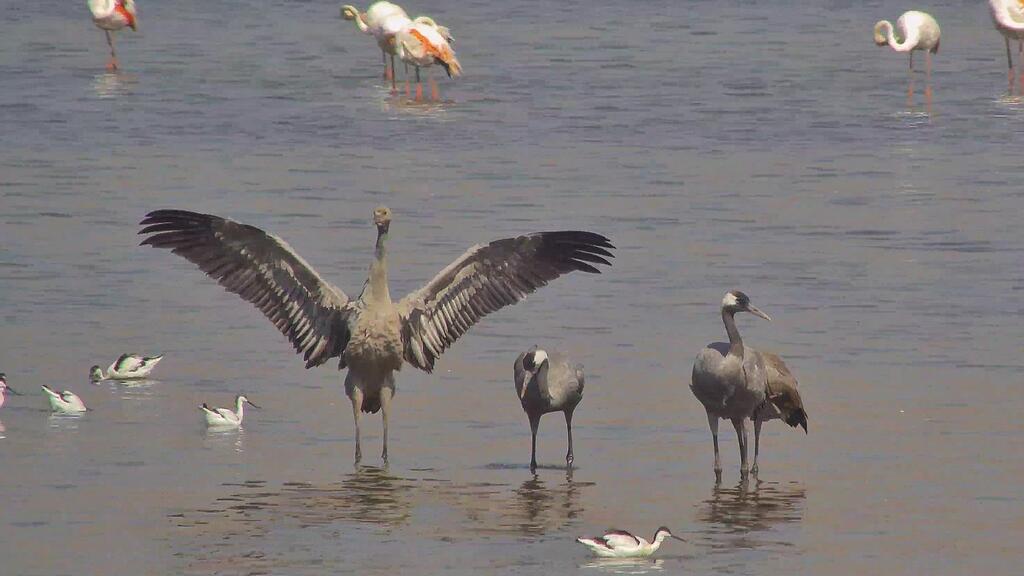Getting your Trinity Audio player ready...
Despite the rocket alert sirens, explosions and interceptions, this week the first family of cranes - a mother, father and two young birds - arrived at Lake Hula in the upper Galilee in northern Israel.
The first cranes, which are expected to continue south to Africa, were received with enthusiasm and flapping wings by the flamingos, who have been resting in the lake for several weeks.
The first cranes land in Lake Hula
(Photo: Inbar Shlomit Rubin, KKL-JNF)
"These are moments of excitement mixed with sadness and worry. The cranes that return to us fill the heart with hope and optimism, but the security situation and the sounds of war may create a very challenging situation for the cranes," said Inbar Shlomit Rubin, field manager at the KKL-JNF Hula Lake.
She added that "in 'normal' years, the cranes symbolize the beginning of the season in Lake Hula, but this year, unfortunately, we do not have the opportunity to invite visitors to enjoy the healing beauty of nature. The cranes maintain the structure of the family unit for a very long time and symbolize family and love; like the cranes we all have hope, may they all return to their families soon and in peace."
1 View gallery


Migrating cranes arrive at Lake Hula in northern Israel
(Photo: Inbar Shlomit Rubin, KKL-JNF)
According to the Israeli ornithology website of the Society for the Protection of Nature, the gray crane is a large egg-laying bird that nests in flooded forest areas. The cranes are similar to egrets and herons - they too have long legs, a long neck and a sharp beak. But unlike egrets and herons, the cranes feed mainly on seeds, roots and tubers in open fields and agricultural areas. Shellfish and small animals form a rare and negligible part of their menu.
The body is gray, the head and throat are black - a white spot goes from behind the eye to the base of the nape of the neck, and a bright red spot on the crown that appears in most individuals. The young crane has a reddish brown head that lacks the contrasting pattern of the adult. His body length is about 115 cm and his weight is between 4,000 grams - 6,100 grams.




